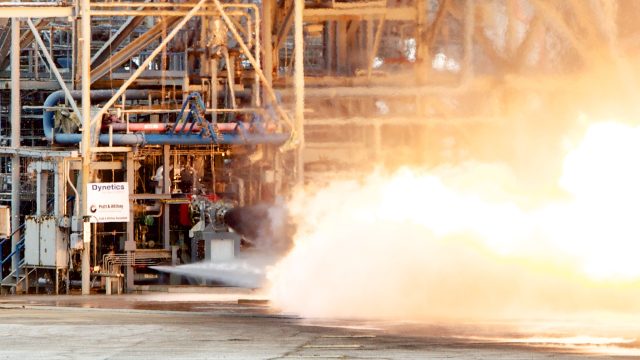Dynetics reporting “outstanding” progress on F-1B rocket engine
Ars Technica » Scientific Method 2013-08-13
Back in April, we covered the efforts of Huntsville-based Dynetics to design a new monstrous liquid-fueled engine for NASA's Advanced Booster Competition. The engine is a new, high-thrust, kerosene/liquid oxygen design based on the F-1 engine that powered the Apollo-Saturn V launch vehicle in the 1960s, and getting up to speed on building a new kerosene/liquid oxygen engine has relied on some creative and exciting rocket archaeology by NASA.
The Advanced Booster Competition's goal is to design the two strap-on boosters that will attach to NASA's upcoming Space Launch System heavy lift rocket. There are several competitors in the contest; the popular front-runner is Space Shuttle Solid Rocket Booster manufacturer ATK, with its solid fueled Dark Knight booster. However, Dynetics (with their Pratt Whitney Rocketdyne partners) hopes to win the competition with its liquid-fueled booster, currently code-named Pyrios after one of the fiery horses that drew Apollo's chariot across the sky.
This morning, Dynetics issued a press release saying that it continues to make steady progress on the Pyrios booster in general, and on the F-1B specifically. Most importantly, the F-1B powerpack assembly (the combined gas generator and turbopump assembly that supplies propellent to the rocket) and the main combustion chamber have both passed their preliminary design reviews—a critical step on the road to delivering the physical engine. It indicates that the designs are safe, that they meet the requirements set forth, and that work can continue beyond prototyping.
Read 3 remaining paragraphs | Comments





